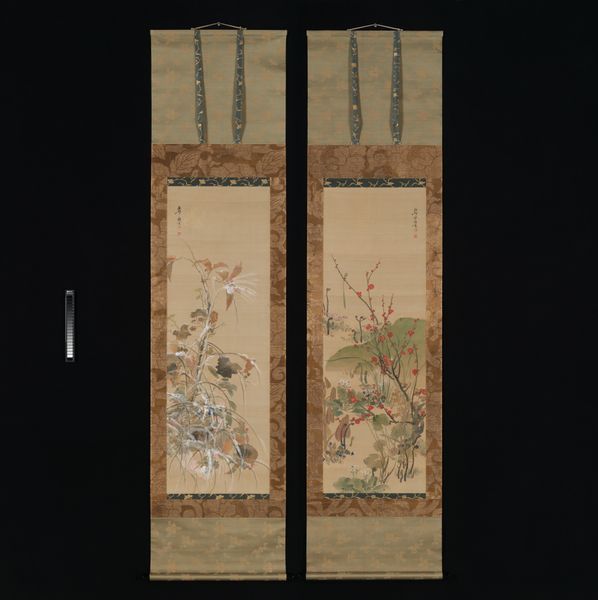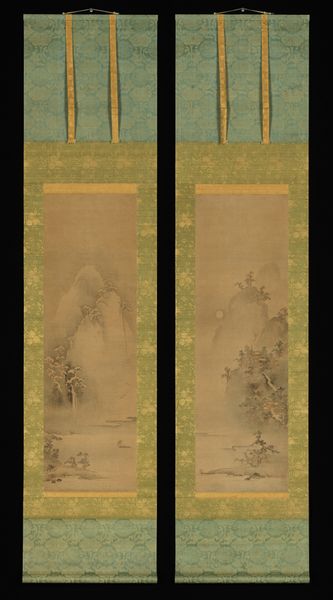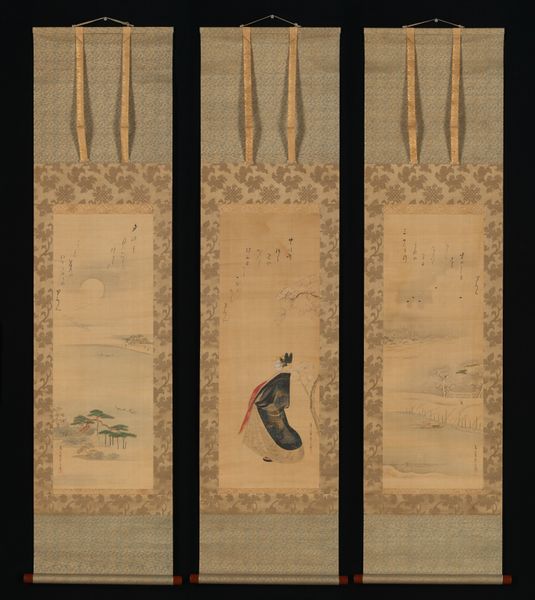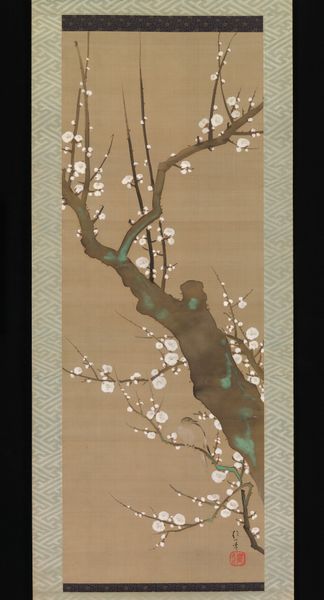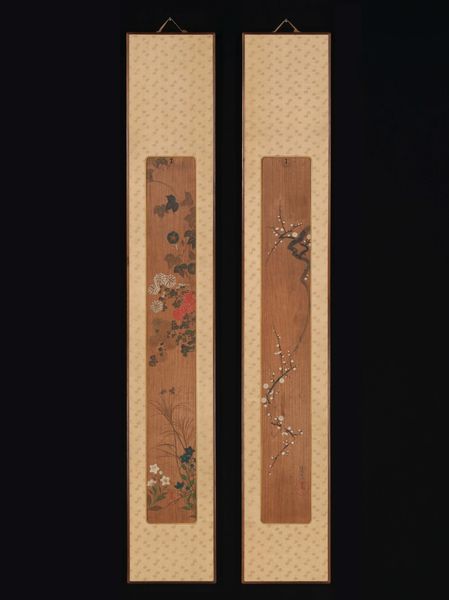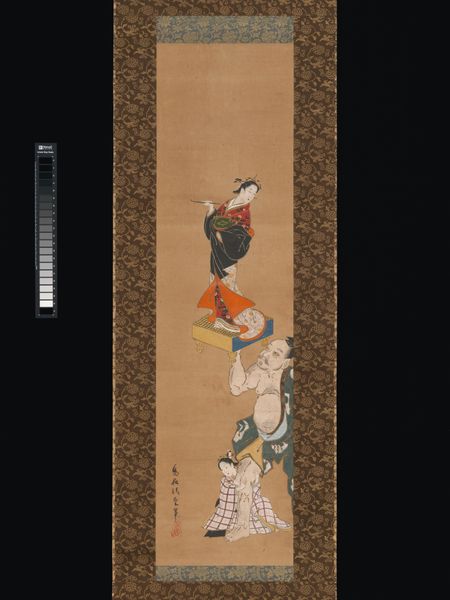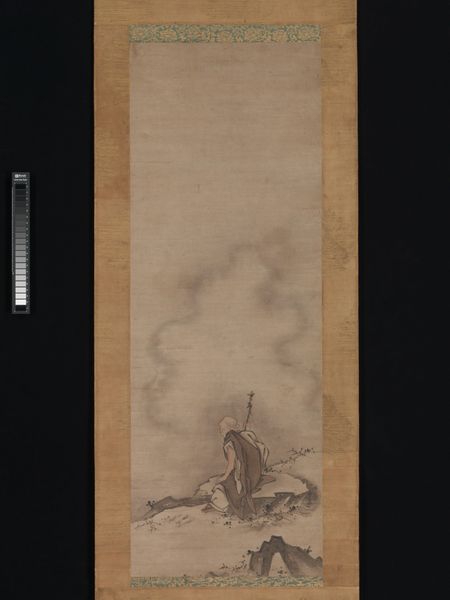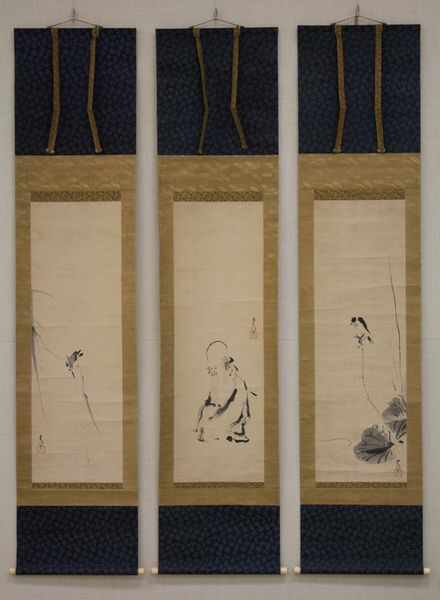
Luring the Sun Goddess Amaterasu Out of a Cave; Death of the Historical Buddha (Nehan-zu) 1868 - 1899
0:00
0:00
drawing, tempera, ink
#
drawing
#
tempera
#
asian-art
#
landscape
#
ink
#
wooden texture
#
24_meiji-period-1868-1912
#
history-painting
Dimensions: Image (a): 27 15/16 × 10 5/8 in. (71 × 27 cm) Overall with mounting (a): 61 × 13 3/16 in. (155 × 33.5 cm) Overall with knobs (a): 61 × 15 1/8 in. (155 × 38.4 cm) Image (b): 27 7/8 × 10 11/16 in. (70.8 × 27.2 cm) Overall with mounting (b): 60 7/8 × 13 1/8 in. (154.7 × 33.4 cm) Overall with knobs (b): 60 7/8 × 15 1/8 in. (154.7 × 38.4 cm)
Copyright: Public Domain
Editor: These hanging scrolls by Kōno Bairei, "Luring the Sun Goddess Amaterasu Out of a Cave; Death of the Historical Buddha," made sometime between 1868 and 1899, have such a captivating contrast. One is very dark, almost somber, while the other feels lighter, airier. How do you interpret this work in its historical context? Curator: I see this as a powerful commentary on the Meiji period in Japan, when traditional beliefs and modernization were in constant tension. Bairei presents two foundational myths—Amaterasu’s story speaks to the origins of Japan, while the Death of Buddha references spiritual enlightenment. The stark contrast embodies the societal shifts and the struggle to reconcile tradition with change. Notice how these stories themselves offer contrasting roles for female figures—one, a goddess of light lured out through cunning performance; the other, figures mourning the death of Buddha, who offered teachings about self liberation from suffering. Editor: So, you're suggesting it reflects the socio-political landscape? How did people at the time see these juxtaposed narratives? Curator: Absolutely. Bairei prompts viewers to consider what’s being lost and what's being gained. The Meiji government promoted modernization, sometimes at the expense of traditional arts and religions. These images engage in a dialogue with that agenda. How do you think these depictions might have resonated with, say, feminist thinkers of the time? Editor: That's fascinating. It's easy to read it as a straightforward mythological depiction without recognizing its engagement with Meiji-era anxieties about identity. Thank you. Curator: My pleasure! It is exciting to view a work such as this and consider the various ways that traditional stories continue to be tools in the work of social change.
Comments
No comments
Be the first to comment and join the conversation on the ultimate creative platform.
